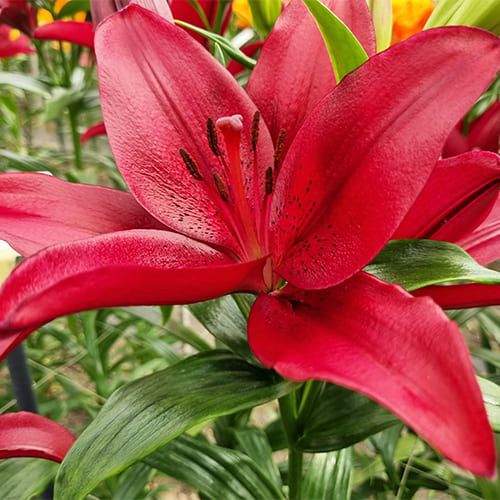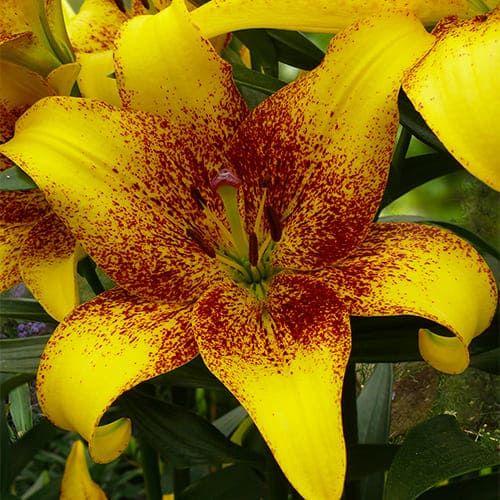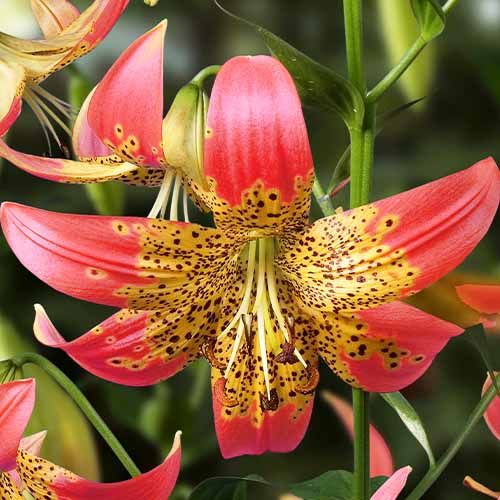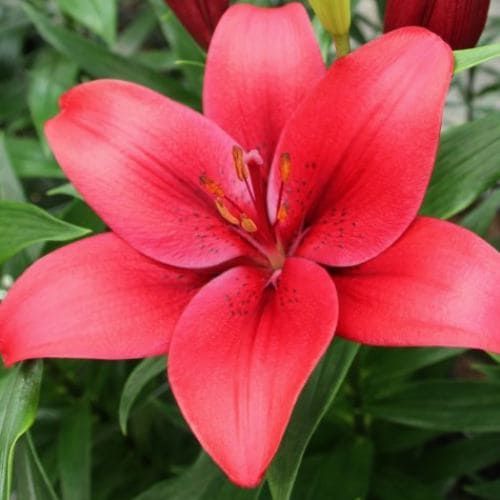
Longiflorum Lilies
Longiflorum Lilies
Last Reviews
Long Stem Lilies: Types, Meaning, and Care Tips for These Elegant Flowers
Long stem lilies are the best candidate to add an impressive and elegant flower to your garden or home decor. Lilies with a long stem and huge, trumpet-shaped flowers are known as longiflora lilies, long stemmed lilies, or longiflorum lilies. These gorgeous blossoms come in a variety of shades, including white, gentle pink, yellow, and even red.
There are a few important guidelines to remember when taking care of your long stem lilies. First and foremost, its crucial to put your lilies in a spot that gets a lot of sunlight yet is shielded from high winds. Be sure to modify your soil before planting if you want to grow longiflora lilies. This is because they require well-drained soil rich in organic matter. Long stem lilies should also be watered frequently to maintain their health and beauty, especially in the hot summer months.
The Meaning and Symbolism Behind Longiflora Lilies: What Do They Represent?
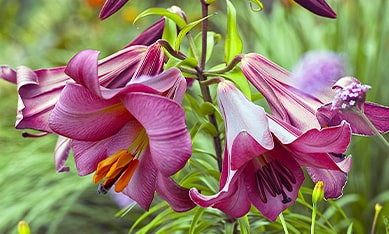
Long stem lilies have a beautiful appearance and have a history of symbolism and meaning. The long-stemmed lily is a symbol of youth, rejuvenation, and purity in many cultures. The lily represents purity and divine grace associated with the Virgin Mary in Christian imagery.
Longiflora lilies are not only known for their spiritual meaning, but are also a popular choice for special events like weddings, birthdays, and other celebrations. These beautiful blooms are frequently used in floral arrangements and bouquets to represent love, beauty, and elegance.
Types of Long Stemmed Lilies: A Guide to Popular Varieties and Their Characteristics
Long stem lilies come in a variety of colors and shapes, each with its own distinct personality and appearance. Some of the most common long-stemmed lilies are:
- Easter lilies: One of the most popular lily varieties, these longiflora lilies have large, trumpet-shaped blooms that are typically white in color.
- Stargazer lilies are distinguished by their bright, vibrant blooms, with deep pink petals with white edges.
- Casa Blanca lilies are florist favorites due to their large, pure white blooms and strong, sweet fragrance.
- Oriental lilies are known for their large, showy blooms that come in a variety of colors ranging from white to pink, red, and even yellow.
Asiatic vs. Oriental Long Lilies: Differences in Appearance, Care, and More
There are many different kinds of long stem lilies, but Asiatic and Oriental lilies are two of the most common. The appearance, maintenance requirements, and other significant differences between these two types are only a few.
Asian lilies have smaller blooms and come in a larger variety of colors than their Oriental cousins. Compared to Oriental lilies, these lilies require less upkeep to grow.
On the other hand, Oriental lilies are renowned for their large, eye-catching blooms, which may be up to 10 inches wide. In order to keep them healthy and vibrant, these lilies need more care and attention than Asiatic lilies do. They often have a more intense aroma.
Planting Longiflorum Lilies: How to Grow These Beautiful Blooms in Your Garden
Planting longiflorum lilies is a relatively simple process that can be done in just a few steps:
1. Choose a location: Lilies prefer well-drained soil and full sun to partial shade. Choose a spot in your garden that gets at least six hours of sunlight a day and has proper drainage.
2. Prepare the soil: Before planting your lilies, prepare the soil by loosening it with a garden fork or tiller. Mix in some compost or well-rotted manure to add nutrients and improve drainage.
3. Plant the bulbs: Plant your bulbs in the fall, about six to eight inches deep and six inches apart. Cover with soil and water thoroughly.
4. Water and fertilize: Water your lilies regularly to keep the soil moist but not waterlogged. Fertilize them with a balanced fertilizer in the spring and midsummer to help them grow strong and healthy.
5. Mulch: Mulch around the base of your lilies with a two-inch layer of organic mulch, such as shredded leaves or straw. This will help retain moisture in the soil and prevent weeds from growing.
When Do Long Stem Lilies Bloom? A Seasonal Guide to Flowering Times
Long stem lilies bloom in late spring to early summer, depending on the variety and climate. Here is a seasonal guide to some popular long stem lily varieties:
- Longiflorum: These lilies bloom in early summer, usually in June.
- Oriental: Oriental lilies bloom in mid- to late summer, usually in July or August.
- Trumpet: Trumpet lilies bloom in mid- to late summer, usually in July or August.
- Asiatic: Asiatic lilies bloom in early to mid-summer, usually in June or July.
By planting a variety of long stem lily types in your garden, you can enjoy their blooms throughout the summer months.
Are Long Stem Lilies Deer Resistant? Tips for Protecting Your Garden
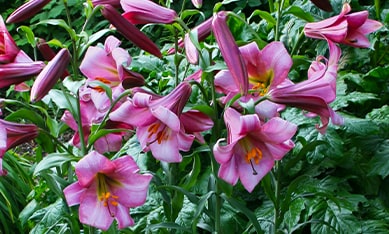
Long stem lilies are a favorite feast for deer and are not deer-resistant. Here are some suggestions for keeping deer out of your garden:
Plant deer-resistant flowers: Choose flowers like daffodils, alliums, and lavender that fend off deer.
Employ a deer repellent: There are several sprays and granules to successfully keep deer out of your garden.
Construct a fence: If your garden is especially susceptible to deer, consider enclosing it with a fence to keep the animals away.
Longiflorum Lily Bulbs: How to Store and Replant for Year-Round Blooms
Longiflorum lilies are known for their stunning, pure white blooms and ability to flower year-round with proper care. One of the key factors in maintaining year-round flowering is proper storage and replanting of longiflorum lily bulbs. In this article, we will provide you with tips on how to store and replant your longiflorum lily bulbs for year-round blooms.
Storing Longiflorum Lily Bulbs:
Dig up the bulbs: When the foliage of your longiflorum lilies yellows and dies, its time to dig up the bulbs. This typically occurs in the fall.
Remove the soil: Gently brush off any excess soil from the bulbs. Do not wash them as this can cause damage.
Air-dry the bulbs: Allow the bulbs to dry in a well-ventilated area for a few days. This will prevent rot during storage.
Prepare the bulbs for storage: Cut off any remaining foliage and remove any damaged or diseased parts. Place the bulbs in a paper bag or mesh bag, making sure they are not touching.
Store the bulbs: Store the bags of bulbs in a cool, dry place where the temperature stays between 40-50F (4-10C). A basement, garage or root cellar are all good options.
Replanting Longiflorum Lily Bulbs:
Choose the right planting location: Longiflorum lilies prefer well-drained soil with an acidic pH level. They also need at least six hours of direct sunlight per day.
Prepare the planting site: Loosen the soil to a depth of at least 8 inches (20 cm) and amend it with organic matter, such as compost or peat moss.
Plant the bulbs: Dig holes approximately 6 inches (15 cm) deep and place the bulbs in the holes with the pointed ends facing up. Space the bulbs at least 6 inches (15 cm) apart.
Cover the bulbs: Backfill the holes with soil and gently tamper it down. Water the area well.
Mulch the planting site: Apply a layer of mulch, such as shredded leaves or bark, to retain moisture and suppress weeds.
By following these tips for storing and replanting your longiflorum lily bulbs, you can enjoy their beautiful blooms year-round. Keep in mind that longiflorum lilies may take a year or two to fully establish themselves in their new location, so be patient and enjoy the process!











